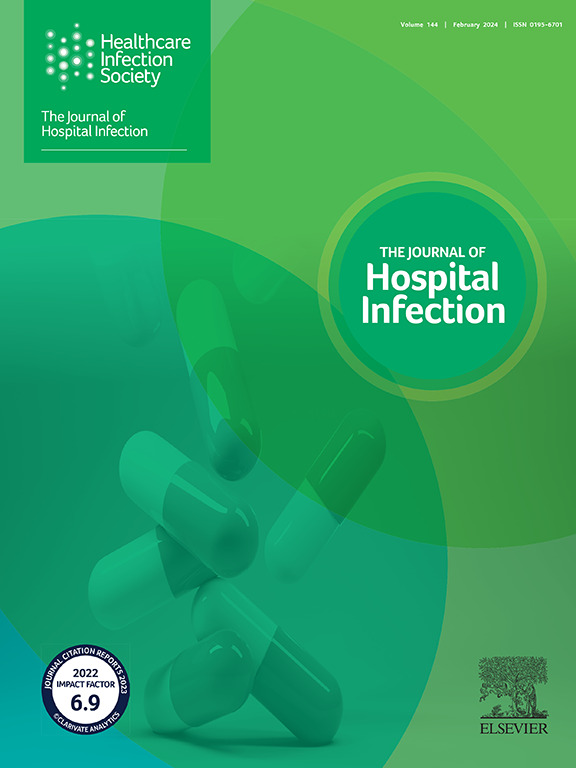Management of vancomycin-resistant Enterococcus faecium in Dutch healthcare institutes: a nationwide survey
IF 3.9
3区 医学
Q1 INFECTIOUS DISEASES
引用次数: 0
Abstract
Background
Vancomycin-resistant Enterococcus faecium (VREfm) is an opportunistic pathogen, which can cause outbreaks in hospitals. In the Netherlands, several national guidelines and guidance documents on different aspects of VREfm management are available. Most available guidelines are written towards the hospital setting and only few on long-term care facilities (LTCFs). Moreover, not all aspects of VREfm management are covered, recommendations differ and the level of compliance to these guidelines is unknown. The aim of this study was to get insight into the routine VREfm policies in Dutch healthcare facilities with regard to screening, diagnostics and infection control measures.
Methods
Online questionnaires were sent to representatives of Dutch hospitals and LTCFs. The questionnaire included questions regarding the definition of VRE, screening, diagnostics, patient isolation, cleaning procedures, VREfm clearance and VREfm outbreaks.
Findings
The questionnaire was completed by 61 hospitals with a response rate of 84.1% and 57 LTCFs, mostly nursing homes. Most hospitals reported VREfm outbreaks in the previous decade, whereas only one LTCF reported an outbreak. Of the hospitals, 87% perform VREfm screening versus 50% of the LTCFs. VREfm-positive patients are isolated in 98% of hospitals and 83% of LTCFs. Protocols regarding how to unlabel VREfm-positive patients are in place in 84% of the hospitals and in 51% of LTCFs. The details of these measures differ substantially between healthcare facilities.
Conclusion
This study has shown that most hospitals and some LTCFs in the Netherlands have standard procedures for VREfm management to some level, although the comprehensiveness and details of the measures differ per hospital. More uniform policies would improve comparability of VREfm data on a regional/national level.
荷兰医疗机构对耐万古霉素肠球菌的管理:一项全国性调查。
背景:耐万古霉素粪肠球菌(VREfm)是一种机会性病原体,可在医院引起疾病暴发。荷兰针对 VREfm 管理的不同方面制定了多份国家指南和指导文件。大多数指南都是针对医院环境编写的,只有少数指南涉及长期护理机构(LTCF)。此外,这些指南并没有涵盖 VREfm 管理的所有方面,提出的建议也不尽相同,对这些指南的遵守程度也不得而知。本研究旨在了解荷兰医疗机构在筛查、诊断和感染控制措施方面的常规 VREfm 政策:向荷兰医院和长期护理机构(LTCF)的代表发送了在线调查问卷。调查问卷包括有关 VRE 的定义、筛查、诊断、患者隔离、清洁程序、VREfm 清除率和 VREfm 爆发的问题:61 家医院(回复率为 84.1%)和 57 家 LTCF(主要是疗养院)填写了调查问卷。大多数医院报告在过去十年中爆发过弧菌感染,而只有一家 LTCF 报告爆发过弧菌感染。在医院中,87% 的医院进行了 VREfm 筛查,而 50% 的 LTCFs 进行了 VREfm 筛查。98% 的医院和 83% 的 LTCF 隔离了 VRE 阳性患者。84% 的医院和 51% 的 LTCF 制定了关于如何取消对 VRE 阳性患者标记的协议。这些措施的细节在不同的医疗机构之间存在很大差异:这项研究表明,荷兰大多数医院和一些 LTCF 在某种程度上都有管理 VREfm 的标准程序,但每家医院的措施的全面性和细节各不相同。更加统一的政策将提高地区/国家层面上 VREfm 数据的可比性。
本文章由计算机程序翻译,如有差异,请以英文原文为准。
求助全文
约1分钟内获得全文
求助全文
来源期刊

Journal of Hospital Infection
医学-传染病学
CiteScore
12.70
自引率
5.80%
发文量
271
审稿时长
19 days
期刊介绍:
The Journal of Hospital Infection is the editorially independent scientific publication of the Healthcare Infection Society. The aim of the Journal is to publish high quality research and information relating to infection prevention and control that is relevant to an international audience.
The Journal welcomes submissions that relate to all aspects of infection prevention and control in healthcare settings. This includes submissions that:
provide new insight into the epidemiology, surveillance, or prevention and control of healthcare-associated infections and antimicrobial resistance in healthcare settings;
provide new insight into cleaning, disinfection and decontamination;
provide new insight into the design of healthcare premises;
describe novel aspects of outbreaks of infection;
throw light on techniques for effective antimicrobial stewardship;
describe novel techniques (laboratory-based or point of care) for the detection of infection or antimicrobial resistance in the healthcare setting, particularly if these can be used to facilitate infection prevention and control;
improve understanding of the motivations of safe healthcare behaviour, or describe techniques for achieving behavioural and cultural change;
improve understanding of the use of IT systems in infection surveillance and prevention and control.
 求助内容:
求助内容: 应助结果提醒方式:
应助结果提醒方式:


